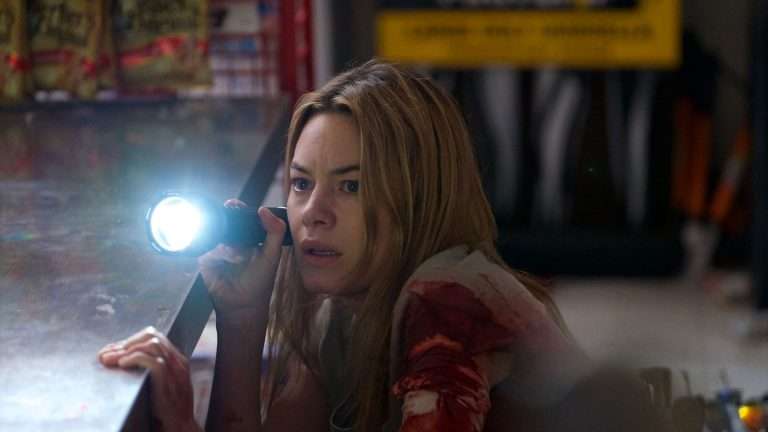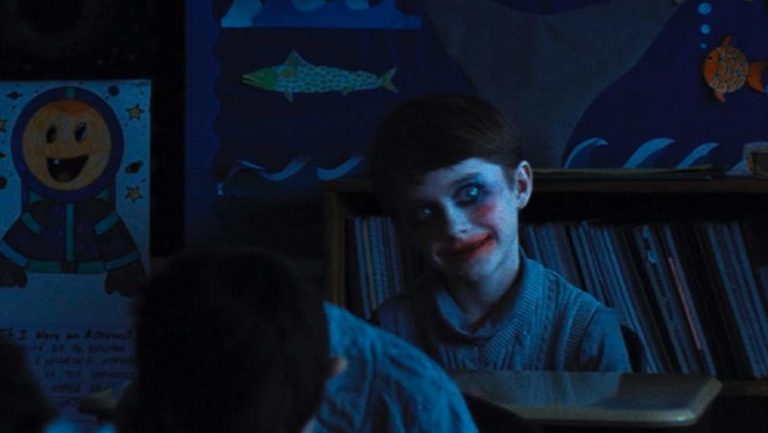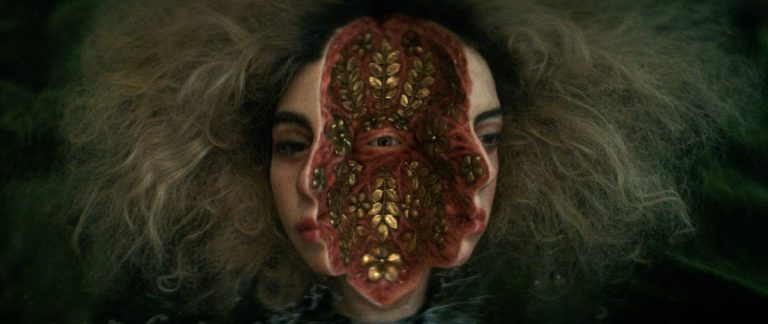Godzilla (Gojira, 1954) Movie Ending Explained: In the 1950s, the domestic film industry in Japan gradually resurged after a devastating phase during WWII. Alongside the legendary triumvirates – Yasujiro Ozu, Kenji Mizoguchi, and Mikio Naruse – from the silent era, a new crop of extraordinary filmmakers (Akira Kurosawa, Masaki Kobayashi, Kon Ichikawa, and so on) were turning out movies that garnered acclaim on home and abroad. In fact, the 1950s are now universally acknowledged as the Golden Age of Japanese Cinema. There were other efficient and excellent filmmakers apart from the ones mentioned above, some of whom expanded the commercial scope of home-grown Japanese movies.
One such popular filmmaker among mainstream moviegoing audiences was Ishiro Honda, and the memorable project that pushed him into the pop-culture hall of fame was “Godzilla” (“Gojira,” 1954). Made on a budget of 63 Million Yen, “Godzilla” was Japan’s most expensive movie at the time. While the film was a sensation at the box office and initiated one of the longest-running film franchises, Honda’s astounding achievements in the monster and disaster film subgenres were fully appreciated only in the later decades. Honda wrote the script with Takeo Murata and worked with the ingenious special effects director Eiji Tsuburaya to precisely stage the monster rampage sequences.
Recommended: Shin Godzilla (2016) Movie Ending Explained: Did ‘Operation Yashiori’ Succeed?
Using a combination of miniature sets and suitmation, Tsuburaya pioneered special effects (known as ‘Tokusatsu’) in Japanese films and kickstarted the kaiju genre. Tsuburaya was chiefly inspired by the American pre-code monster film “King Kong” (1933). It has been seven decades since Honda and Tsurubaya evoked fears of nuclear terror in the wake of Godzilla’s attack on Tokyo. But these monochromatic images of widespread destruction still have a lasting impact on its audiences. Unlike the many empty CGI monster spectacles, Honda’s “Godzilla” also serves as a cautionary tale about atomic power. The prehistoric monster mutated by nuclear testing reflects the deeper anxieties of the world’s only post-nuclear landscape.
Now, let’s take a detailed look at how an ancient dinosaur-like creature wreaks havoc on post-war Japan. Spoilers Ahead.
Godzilla (1954) Plot Explained:
What is the mysterious force causing havoc in the sea?
“Godzilla” (Gojira) opens with the Japanese freighter Eiko-maru – near Odo island – perishing in the sea after a mysterious light deep under the ocean sets the ship on fire, killing most of its crew. After receiving the news of the ship’s SOS message, the sailor Hideto Ogata (Akira Takarada) is asked to report to the Coast Guard office. He leaves his girlfriend, Emiko (Momoko Kochi), with whom he plans to go out. At the Coast Guard office, it’s reported that another freighter, Bingo-maru, is sent to the area where Eriko-maru was lost. But this ship also faces the same fate. Soon, fishermen rescue three of the survivors from the ship.
Just as the officials are slightly relieved they have at least a few survivors to recount what happened, fresh reports come in. The fishing boat with the survivors was also destroyed in the seas. The newspaper reports speculate the presence of naval mines and underwater volcanoes. A fishing village on Odo island awaits the return of their fishermen. Soon, a village elder spots a raft with a single unconscious survivor, Masaji.
The fishing boats return to the village in the next few days without a single catch. The village elder blames it on a prehistoric sea creature, ‘Gojira.’ Reporters arrive in a helicopter to the village to investigate. Masaji reluctantly speaks of the giant creature, although no one in the village believes him. In the evening, the villagers gather to watch the ritual dance to appease the sea monster. The village elder states in the older days, they’d offer up a young girl to the hungry monster. Now, all that’s left of their sacrificial ritual is the dance.
Who is Dr. Serizawa, and what secrets might he have?
Later that night, a fiery storm strikes the island, destroying many villagers’ homes and the reporters’ helicopter. Amidst the storm, it’s hinted that Godzilla has come ashore. The surviving fisherman, Masaji, dies in the monster’s rampage, leaving behind his grief-ridden younger brother, Shinkichi. The following day Odo residents travel to Tokyo for disaster relief. It’s reported that the alleged typhoon has destroyed seventeen houses and killed nine people and twenty livestock. The villagers, including Shinkichi, and the reporters attest that the typhoon wasn’t the only cause of the destruction.
Next, paleontologist Professor Dr. Kyohei Yamane (Takashi Shimura) is called to offer his testimony. He suggests forming an emergency research team to visit the Odo island village. Ogata, Emiko, and her father, Yamane, are part of the team that visits the village. At the port, the team was sent off by the eye-patch-wearing Dr. Serizawa (Akihiko Hirata), a gifted scientist who is betrothed to Emiko. In recent times, Serizawa is said to be obsessed with his experiments and rarely leaves his lab.
What is the connection between Godzilla and the atomic bomb?
Led by Dr. Kyohei Yamane, the team investigate the destruction of the island village. The scientists pick up radioactive fallout in certain areas of the village, which they deduce to be Godzilla’s footprint. Yamane also finds a trilobite, a marine arthropod that is long extinct. Soon, the village alarm bell is rung. The investigative team and the villagers rush to see the monster on the other side of the hill. They all retreat after seeing a giant dinosaur-like creature scaring everyone with its terrifying (and now-iconic) roar. Yamane quickly snaps a picture of the monster.
Yamane presents his findings to the committee in Tokyo. He considers the giant creature as an intermediate amphibious organism that evolved between the Jurassic and Cretaceous periods. Yamane presents the picture of the monster and calls it Godzilla, following the Odo traditions. He posits that the 165-foot-tall creature might have emerged from the deep sea cave after the H-bomb tests had destroyed its natural habitat. Yamane also presents evidence of trilobite. The sand recovered from the trilobite’s shell is said to belong to the Jurassic era. The radioactive readings of the sand also confirm the high radiation levels that are possibly from H-bombs.
Can Godzilla be stopped?
The debate over notifying the press and public about Yamane’s findings only leads to noisy arguments: Should they report the radioactive monster and risk diplomatic fallout or prioritize immediate action regardless of international consequences? In the subsequent days, Godzilla sightings and attacks haven’t abated, leading to the public learning about the monster. A newspaper report mentions that 17 ships have been lost at sea so far, and Disaster Response Centers have been established in Tokyo.
Ordinary people traveling on subway trains fear the attack of Godzilla in Tokyo Bay. A woman recalls narrowly escaping the A-bomb attack on Nagasaki and feels dejected to face another greater threat. To counter the Godzilla attack, frigates are sent to kill the monster by using depth charges. Professor Yamane watches the news of dispatching frigates with unease. As a Zoologist professor, Yamane wants to study Godzilla rather than destroy it. The depth charges, however, don’t seem to have had any impact as Godzilla is sighted by a group of panicked ship passengers.
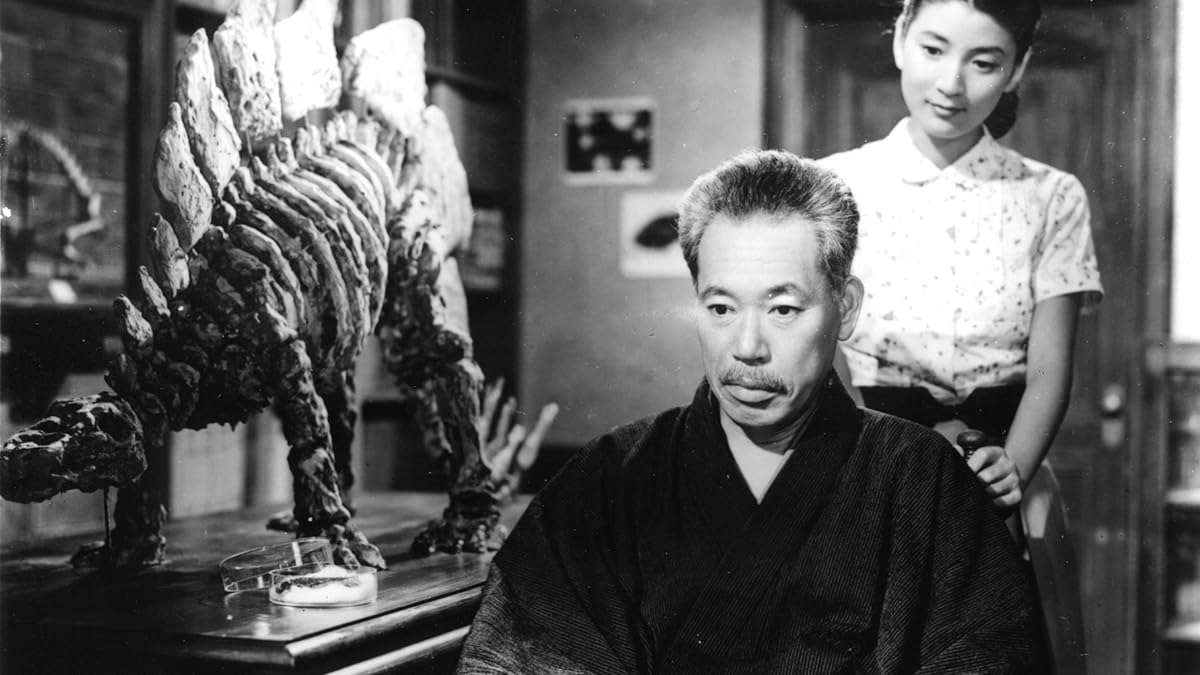
What is the horrifying secret weapon Dr. Serizawa unleashes?
The officials appeal to Yamane to give an idea of how to kill Godzilla. However, Yamane is of the opinion that the only way to avert the disaster is to study Godzilla since the H-bomb has made the monster indestructible. Meanwhile, Emiko thinks of asking her father’s permission to marry Ogata. Ogata feels sorry for Dr. Serizawa, although Emiko confesses that she had only thought of Serizawa as an older brother. Subsequently, a reporter seeks Emiko’s help to interview Dr. Serizawa since his own attempts to interview the reclusive scientist have failed. Ogata feels it might be the right time for Emiko to talk with Serizawa about breaking off her arranged engagement.
The reporter questions Serizawa about the experiment he is working on, which is rumored to provide a breakthrough in killing Godzilla. However, Serizawa denies the speculations and refuses to talk about his current project. After the reporter leaves, a visibly distressed Dr. Serizawa wants to show Emiko something. He asks for her secrecy and takes Emiko to his basement lab. There, he drops a capsule into the fish tank and waits for the horror to unfold. Emiko is unable to watch the terror before her but swears to keep it a secret. After returning home, Emiko and Yamane hear the air raid sirens, indicating Godzilla is approaching Tokyo Bay.
Can Anything Stop Godzilla’s Atomic Fury?
Godzilla surfaces from the ocean and attacks a passing train. The monster soon returns to the ocean without causing further damage. After discussing this with international researchers, the Self-Defense Forces decide to build a 100-foot-high electrified barbed-wire fence all along the coast. The people living near the coastal areas are moved to the shelters, and armed forces are deployed along the coast. At home, Ogata hopes to ask Yamane’s consent to marry his daughter, Emiko. However, Yamane returns home in a sullen mood, disappointed that no one understands the benefits of studying Godzilla’s resistance to radiation.
Ogata disagrees with Yamane, claiming the threat posed by Godzilla demands its annihilation. The difference of opinion makes Yamane ask Ogata to leave his house. At that moment, a news bulletin announces Godzilla advancing toward the Tokyo coast. Godzilla effortlessly breaks through the electric fence. Moreover, neither the machine gun fire nor the tanks pose any threat to the monster. Once it enters the city, Godzilla uses its atomic breath to rain fire upon the streets. Like the firebombing raid on Tokyo in March 1945, Godzilla’s rampage leaves the city engulfed in flames.
The casualties are unprecedented as everyone from the Self-Defense Forces to the journalists and the ordinary people perish in the fire. We witness a chilling image of a mother embracing her three little kids, waiting to die in the monster attack. Buildings are reduced to rubble, and bridges are collapsed, flooding nearby regions. As Godzilla makes its way back to the sea, Yamane, Emiko, and other people watch the carnage from afar. Fighter jets are sent as a last resort to kill Godzilla. But that also fails, and the monster, having expended its energy, returns to the ocean.
Godzilla (1954) Movie Ending Explained:
Will the Oxygen Destroyer be humanity’s salvation or another devastating weapon?
The day after the attack, hospitals are flooded with people. While corpses are being removed from the burnt-out buildings, the few survivors also suffer from radiation sickness. To the Japanese people, it brings to mind the not-so-distant images of war. Unable to bear the large-scale devastation, Emiko tells Ogata about Serizawa’s research project. Dr. Serizawa’s secret weapon is called ‘Oxygen Destroyer,’ which, once released, will isolate oxygen molecules and split them. This means the chemical will first suffocate any organism due to the lack of oxygen and then disintegrate it. When the chemical was released in the controlled environment of the fish tank, the fish were instantly reduced to skeletal form.
After making Emiko watch the fish tank horror, Dr. Serizawa tells her that he started his project to thoroughly study oxygen. But having unleashed terrible energy in the form of Oxygen Destroyer, Serizawa had isolated himself from others. He fears the substance in the small capsule could be more harmful than a H-bomb. Hence, Serizawa tries to find a way to use Oxygen Destroyer only to benefit society. He doesn’t want to reveal his findings until that day. Dr. Serizawa is even prepared to kill himself and destroy his research if anyone gets wind of it.
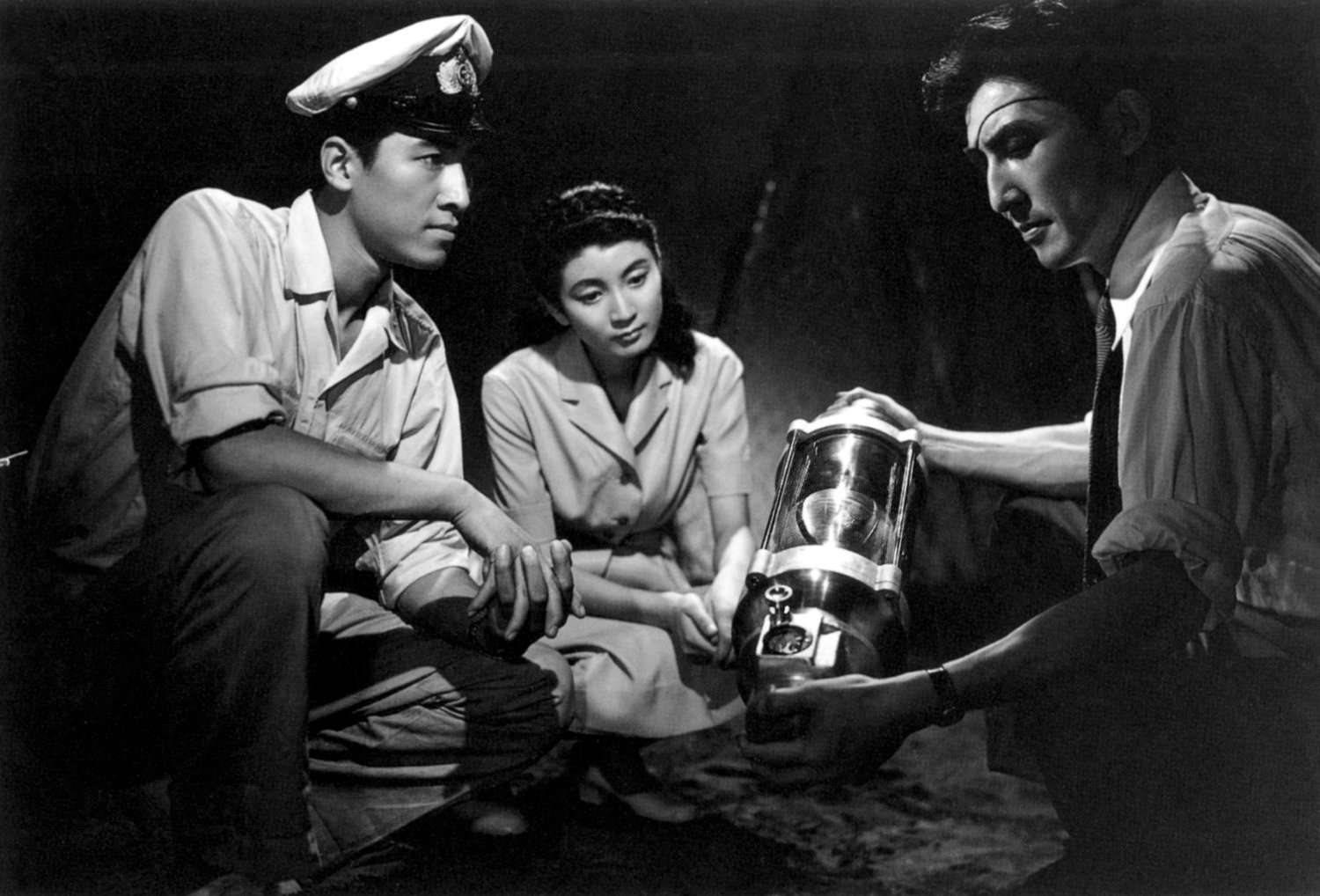
Did the doomsday device kill the prehistoric monster?
Now, Ogata and Emiko implore Serizawa to unveil the Oxygen Destroyer to destroy Godzilla. As expected, Serizawa vehemently protests, fearing that the world leaders will utilize his invention as a weapon of mass destruction. Nevertheless, a poignant news broadcast of the widespread destruction of Tokyo, plus Emiko and Ogata’s pleas, lessen Serizawa’s determined stance. Subsequently, Dr. Serizawa burns his research notes and agrees to use the Oxygen Destroyer only once to kill Godzilla.
A navy ship takes Serizawa and Ogata for the mission. Emiko and Yamane are also present on the ship. The navy pinpoints Godzilla’s location in the sea using a Geiger counter. Ogata volunteers to place the capsule in the ocean bed. But Dr. Serizawa says he must accompany Ogata to carry out the mission effectively. After unloading the capsule, Serizawa gestures to Ogata to move to the surface. But instead of following Ogata, Serizawa cuts off his air support and dies along with the monster. In the death throes, Godzilla emerges one final time to the surface with a roar that petrifies everyone on the ship. But it sinks under the sea soon, and its body disintegrates into skeletal form.
“Godzilla” ends with Emiko and Ogata mourning Dr. Serizawa’s death. Professor Yamane believes Godzilla won’t be the last of its species. He warns the world that if nuclear testing continues, Godzilla will keep appearing in the future. Of course, Godzilla didn’t perish with the 1954 movie. The monster made its second appearance in 1955’s “Godzilla Raids Again” and continues to be the king of the kaiju sub-genre in Japan and worldwide. The recently released Japanese Godzilla flick, “Godzilla Minus One” (2023), was a critical and commercial success.
Godzilla (1954) Theme Analysis:
Terror of the Bomb and Nuclear Holocaust
The giant ape terrorizing New York City became the symbol of nature’s destructive power. The groundbreaking 1933 film showcased the perils of interfering with the natural world. Eugene Lourie’s 1953 film, “The Beast From 20,000 Fathoms,” taps into the anxieties of the atomic age by presenting a dinosaur-like creature waking up from its slumber due to the nuclear tests in the Arctic. This film chiefly inspired Honda’s “Godzilla,” and the fear of the bomb was strong among post-war Japanese people since it was the only nation to have witnessed the devastation of a nuclear holocaust.
Godzilla’s immense size and atomic breath became the perfect metaphor for Japan’s fear of nuclear weapons. The monster’s unprecedented mutation reflects the terrifying unintended consequences of nuclear-based technology. The film is about a nation in transition, caught between a traumatic past and an uncertain future. While Godzilla in the MonsterVerse movies is defined as a superhero of sorts, and its rampage is perceived as a pulpy genre fare, Japan’s Godzilla evokes the ordinary Japanese people’s experiences in World War II, including the devastation caused in Hiroshima and Nagasaki. Honda brilliantly balances between delivering compelling visuals and a somber, timely message, which is unfortunately still relevant.
The Complex and Contradictory Nature of Science & Technology
From “Frankenstein” (1931) to Nolan’s “Oppenheimer” (2023), cinema has often explored the ethical implications of scientific ambition. This perception of science as a ‘double-edged sword’ is crucial to the (somewhat stereotypical) character sketch of Dr. Serizawa. The lone scientist working in his basement laboratory invents the weapon to conquer the Godzilla threat. At the same time, he is torn by the question of what fresh terrors his weapon will unleash on humanity.
Although the science behind nuclear weapons is implicated in the creation of Godzilla, paleontologist Yamane’s character emphasizes the importance of scientific study rather than ignorantly throwing everything at our disposal to eradicate the monster. Science is definitely a force for progress and understanding, but there will always be warnings against the consequences of scientific overreach. Science can be faultless, but humans are deeply flawed.




